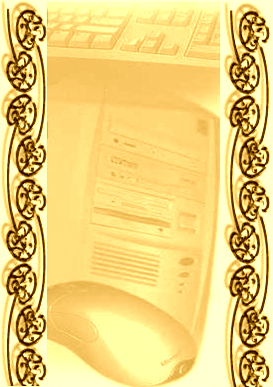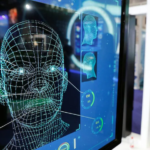A free comprehensive dictionary of Māori Computer and Social Media terms. The dictionary contains over 374,000
headwords with translations from 33 recorded sources.
Download
Acknowledgements
Introduction
Sources
This is a significant resource for any student of te reo Māori or for anyone who uses the multiple technology related devices and software that has been translated into te reo Māori. It is a small contribution to the efforts of those who contribute to the revitalisation of te reo Māori.
The wide range of sources and terminology demonstrates the growing popularity of the Māori language in the past decade and I hope this is a positive indication that it will continue to prosper and receive the
recognition that it deserves.
It has been almost 20 years since Māori language software that offers a bilingual interface on a Windows computer was first released. Many of the terms translated in the late 1990’s are still in use today.
Technology barriers and digital divide issues are on the decline. As a result, Māori language needs to be used in technology to ensure its ongoing relevance and survival. As whānau increase their use of technology as a preferred means of communication, this generates demand for Māori language options in a modern connected world, where
more Māori than non-Māori use social media more and more Māori are connected to the Internet.
Having interfaces in the Māori language creates the unintended issue that there is new terminology that is not understood due the terminology being newly adapted and created. It needs time to be normalised and learned.
Acknowledgements
The publication is a result of the collaboration of the many individuals and organisations who have invested a lot of time and effort to create new words for the Māori language over at least the past twenty years.
Unfortunately due to the nature of APA referencing, technology being developed and replaced at such a rapid pace, contractors being paid to create new terminology and assign all of their rights to the company paying them, and others in the language community being whakama or just creating new terminology so they can communicate in a daily situation as Joseph Ramanui has done with Pokemon names and terminology, the original authors of a large grouping of new terminology has been lost while the words have become normalised in our language. One example is the 2 Degrees terminology which was created by Te Wareko Ainga. But with more research and direct contacts I am sure others will come forward with the original of the new terminology.
I want to acknowledge those who assisted in the Editions 1 and 2. Greg Ford, Akuhata Tangere, Te Taka Keenga, Te Matakuru O’Connell, Dr Te Taka Keegan and Tom Roa, to Kura Kaupapa Māori and Waikato University.
A key figure in the digital era and recognizing the need for Māori to adapt te reo Māori is Ian Cormack a Te Taura Whiri i te reo Māori registered Māori Translator and Interpreters License holder under Section 15(2) c of the Māori Language Act 1987 who was the translator for many of the projects including, Facebook terms, Twitter terms and Silverstripe CMS in addition to various other publications that he has authored under his own name.
Commercial entities such as Microsoft, Google and Silverstripe who have taken the initiative to recognise te reo Māori and offer it is an option must be recognized for their assistance to the continuing growth and support of te reo Māori. Without these major contributions it would be difficult for many people to use and see te reo Māori in their professional and social time while using the Internet and computers.
Introduction
The papakupu contains over 374,000 unique headwords with translations from 33 different recorded sources making this dictionary over six times larger than the Ryan Modern Māori Dictionary, with almost 15 times more head words than the Williams dictionary.
This is a specialised dictionary of Māori language that concentrates on one aspect of technology and also includes terminology and names from the recent global phenomenal augmented reality game Pokémon.
The wide range of sources and terminology demonstrates the growing popularity of the Māori language in the past decade and I hope this is a positive indication that it will continue to prosper and receive the recognition that it deserves.
Due to the size of this publication, the costs to produce it in book format requires additional funding. Access your free electronic copy:  It has been almost 20 years since Māori language software that offers a bilingual interface on a Windows computer was first released. Many of the terms translated in the late 1990’s are still in use today.
It has been almost 20 years since Māori language software that offers a bilingual interface on a Windows computer was first released. Many of the terms translated in the late 1990’s are still in use today.
At the time Edition 1 and Edition 2 were compiled there was little interest from the Māori language community to adapt the language to technology. Pockets of language practitioners were translating words for their own usage and did not distribute the words as they were not authorised translations by Te Taura Whiri i te reo Māori (The Māori Language Commission), despite the fact the commission at the time, did not have the capacity to provide assistance.
Much has changed in the last ten years since Edition 2 was compiled. International corporations, small businesses and expert translators who are recognised by Te Taura Whiri have invested both money, time and other resources to translate and create new terms that enable Māori language learners and speakers to use software, smart phones and social media in the Māori language.
Corporations such as Google and Microsoft have completed bilingual interfaces for Māori language, a smart phone while very limited in its ability, has Māori language as the interface language and various software and social media has been translated into or had new terms translated into Māori language. Some terms are not legitimate as they are translations of TradeMark names, however they are included in this compilation as Māori media and reach of the Internet has made these terms common and socially accepted terms of Māori language.
Technology barriers and digital divide issues are on the decline. As a result, Māori language needs to be used in technology to ensure its ongoing relevance and survival. As whanau increase their use of technology as a preferred means of communication, this generates demand for Māori language options in a modern connected world, where more Māori than non-Māori use social media and over 80% of Māori are connected to the Internet.
Having interfaces in the Māori language creates the unintended issue that there is new terminology that is not understood due the terminology being newly adapted and created. It needs time to be normalised and learned. Most of the technology language initiatives did not include public glossaries of the kupu hou, and they continue to be omitted. It is likely that this will hinder the usage of bilingual software and systems by end users. It is certainly a barrier for developers who want to make their software and system bilingual but are faced with two options to either create new words at a large cost or create further confusion of new words or to not offer a bilingual option.
Sources used in the dictionary
- 2Degrees Mobile Te Reo IDEOS X3 smartphone terminology
- He Kupu Arotake
- Department of Economics – Waikato University
- Google Māori Glossary
- He Kawenga Rorohiko
- He Kupu Arotake
- He Muka
- Ian Cormack – Facebook Māori
- Ian Cormack – Twitter Māori locale
- Joseph Ramanui Pokemon Māori
- Kimi Kupu Hou searchable database of new and technical Māori vocabulary
- Kura Kaupapa Māori
- Ngāi Tahi Language Revitalisation project
- Kupu – Maori/English word processor
- Mandrake 9.1 Linux Māori Locale
- Microsoft Language Portal
- Maori for the office-Te reo Māori mō te tari
- Ministry of Education
- Me ako tatou i te reo Māori
- Moodle Maori locale
- Nga Mauranga – Special Edition (Nov 1989)
- New Zealand Qualifications Authority
- Ngata English-Maori dictionary
- Reddfish Intergalactic
- The Raupō dictionary of modern Māori
- SilverStripe CMS Māori locale
- Te Mihinga Komene – Kuputaka Reo Hangarau: glossary of useful IT & social media terms
- Te Kete Ipurangi
- Taumauri Trust
- Te Reo Tupu
- He puna taunaki : te reo Māori in libraries : a Māori language resource for librarians
- Te Taura Whiri – The Māori Language Commission database
- Whare Wānanga o Waikato circa 1995.






Leave a Reply